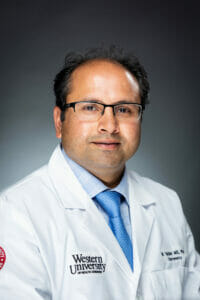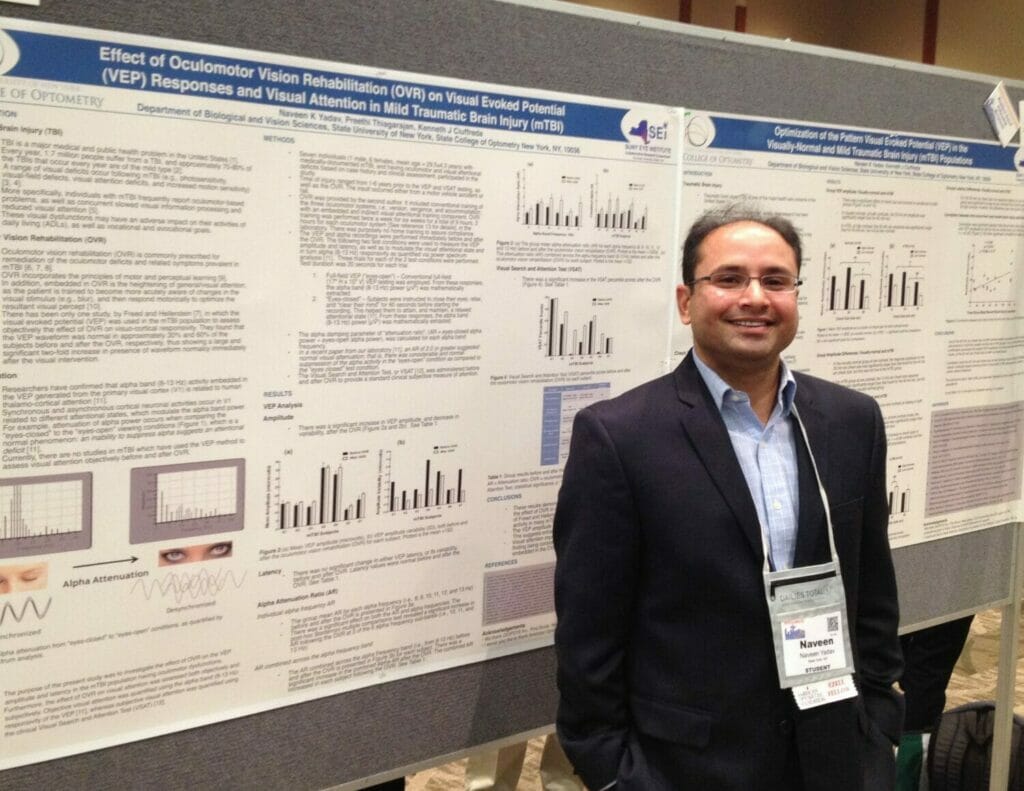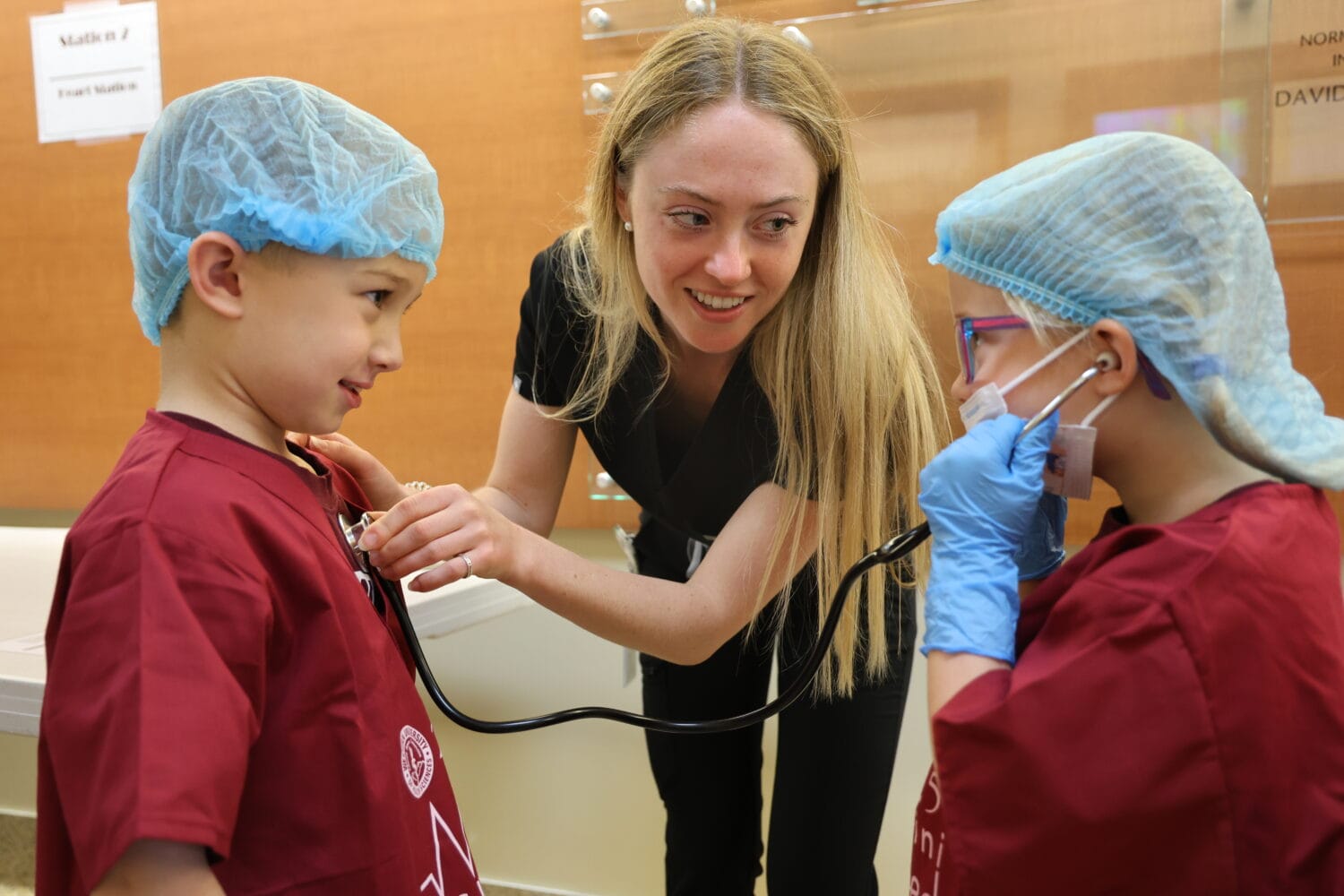Research Profile: Naveen Yadav, BS (H) Optom., MS, PhD, FAAO

College of Optometry Assistant Professor Naveen Yadav, BS (H) Optom., MS, PhD, FAAO, joined Western University of Health Sciences in 2018. He previously worked at Chicago College of Optometry, Midwestern University. Dr. Yadav earned his bachelor’s degrees at CH. Charan Singh University and All India Institute of Medical Sciences in India, his Master of Science in Vision Science from the University of Waterloo School of Optometry in Waterloo, Canada, and his PhD in Vision Science from State University of New York, State College of Optometry, in New York.
Describe one of your current research projects.
My current clinical research project advanced from my graduate work. I and my PhD mentor Dr. Kenneth J. Ciuffreda, based on a study by Fuller et al., developed and expanded a clinical electrophysiology protocol in adult population with mild Traumatic Brain Injury (mTBI). This protocol was used to assess their visual attention deficit, and also to evaluate the effect of visual attentional intervention (visual rehabilitation) provided to these patients with mTBI. Our results revealed that VEP attentional protocols were able to assess visual attentional deficits and also were able to evaluate the positive changes in visual attention after visual rehabilitation. Interestingly, these objective results were also found to be significantly correlated with subjective tests. I published a review paper based on these experiments (Yadav N.K, Ciuffreda K.J, Willeford K.T, Thiagarajan P, Ludlam D.P. VEP and human attention: Translation from laboratory to clinic. Vision Development and Rehabilitation. 2015. 1:14-29.) and received an “Article of the Year” award from the College of Optometrists in Vision Development (COVD) organization. These findings helped me in developing my current research project. The objective of my current study is to develop an objective, rapid, reliable, repeatable, and quantitative attentional protocols using the pattern visual-evoked potential (VEP) technique for clinicians/practitioners to diagnose visual/general attention deficit in younger children with Attention-Deficit/Hyperactivity Disorders (ADHD). Furthermore, these objective quantitative findings will also be correlated with the subjective Diagnostic and Statistical Manual of Mental Disorders, Fifth Edition (DSM V) rating scale. In addition, ReadAlyzerTM eye movement system will be used to assess their eye movements and comprehension while reading a paragraph. Lastly, this objective clinical protocol will be further tested in other diagnostic groups who suffered from visual/general attentional deficits (e.g., younger children with mTBI, autism). As a young clinical researcher, I received my first extramural research grant ($4,000) from the College of Optometrists in Vision Development (COVD) organization to complete this visual attention study in children.
What do you want people to know about your research?
My research focused on the diagnosis of visual dysfunctions in the acquired brain injury population (ABI) and in other neurodegenerative populations such as those with multiple sclerosis (MS) disease by using objective clinical techniques such as visual evoked potential (VEP), electroretinogram (ERG), diffusion tensor imaging (DTI), and function magnetic resonance (fMRI). I have made many pioneering contributions in the field of clinical research related to patients with concussion/mTBI. Below are a few examples:
- I have tested a clinical technique known as binasal occlusion (BNO) in patients with mTBI/concussion and with symptoms of abnormal visual motion sensitivity (VMS). I have shown both objectively and subjectively that BNO helps these patients in reducing visual motion sensitivity and helps them in performing their activities of daily living (ADLs) which they were not able to do before the use of BNO. I have also been able to explain the neurophysiological phenomenon related to the BNO technique. Due to these findings, this technique has been used extensively by clinicians to treat these patients (Yadav N.K, Ciuffreda K.J. Effect of binasal occlusion (BNO) and base-in prisms on the visual-evoked (VEP) in mild traumatic brain injury (mTBI). Brain Injury. 2014. 28:1568-1580).
- As mentioned above, I have developed an objective visual attentional protocol to measure visual attention in patients with mTBI. Visual inattention is one of the visual symptoms of these mTBI patients. In 2015, I have developed an objective ratio called attenuation ratio to differentiate between a patient with and without attentional deficit (Yadav N.K, Ciuffreda K.J, Willeford K.T, Thiagarajan P, Ludlam D.P. VEP and human attention: Translation from laboratory to clinic. Vision Development and Rehabilitation. 2015. 1:14-29).
- I am also interested in interprofessional collaboration in research, education, and clinical practice. Due to this interest, I co-authored an interprofessional book chapter related to vision (Waldman C.W., Hoppe E., Chung I., Cameron J., Yadav N.K., Pham C.T., Bowlin S. Chapter 11: Interprofessional Eye Care: A Vision That Really Works. Building a Patient-Centered Interprofessional Education Program (2020):204-239).
- I was invited by the National Institutes of Health (NIH)/National Eye Institute (NEI) in both 2016 and 2020 to review clinical trial planning grants (R34) which were related to patients with acquired brain injury (stroke and TBI). I was one of the youngest panelists during both of those meetings. These invitations from NIH/NEI provides proof of my pioneering research work in the field of clinical research related to patients with mTBI and stroke.
How would you like people to use the results of your research?
The results of my clinical research could be used by a number of health care professionals such as neuro-optometrists, neurologists, and occupational therapists (OT). These results could be used to both objectively diagnose and to treat a patient with acquired brain injury and also with other neurodegenerative disease. For example, results of my research study titled “Effect of binasal occlusion (BNO) and base-in prisms on the visual-evoked (VEP) in mild traumatic brain injury (mTBI)” could be used to diagnose as well as to treat their symptoms of abnormal visual motion sensitivity. My clinical research results could also be used as teaching tools for students to understand the use of clinical objective techniques (i.e., VEP) to diagnose and assess the progression of the visual intervention (i.e., visual rehabilitation) provided to patients with mTBI.

What inspires you most about your research?
My inspiration is when I see satisfaction and happiness on patients’ faces and, in their eyes, when they get some benefits or improvement in their health condition from my research work. This keeps me motivated and inspires me to do more for these patients.
What would you as a researcher today tell yourself as a researcher when you were starting out?
I will tell myself just work hard on your career goals as nothing is impossible. To achieve your goals in life and career you need to be motivated, committed, professional, humble, and most important, be respectful to your mentors, colleagues, and patients.
I am very thankful that I had Dr. Kenneth J. Ciuffreda as my PhD mentor, who played a big role in providing me a foundation to become the young, successful researcher that I am today.
In light of recent news and developments – do you have any tips on how you are adapting to social distancing, online learning, working off campus, caring for patients amid this pandemic? Helpful tips are appreciated by all.
COVID-19 is one of the biggest pandemics of this decade. To reduce the effect of this virus I’m doing social/physical distancing. I and my family are staying at home and doing our part. I have a son who is 3 years old now and, due to this situation, I got a chance to spend more time with him, which I did not get in three years. I am spending my time finishing overdue projects, preparing for courses, reviewing research articles for peer-reviewed journals, and, interestingly, proctoring online lab proficiencies. I am also working on a few research protocols whose results will be helpful for patients with neurological conditions.
My tips are to avoid watching too much news related to COVID-19, stay positive, take one day at a time, do fun activities with your family, which makes everyone in your family to forget about this pandemic, and exercise whenever you get a chance. These tips are working for me. I hope they will be helpful for you, too.



